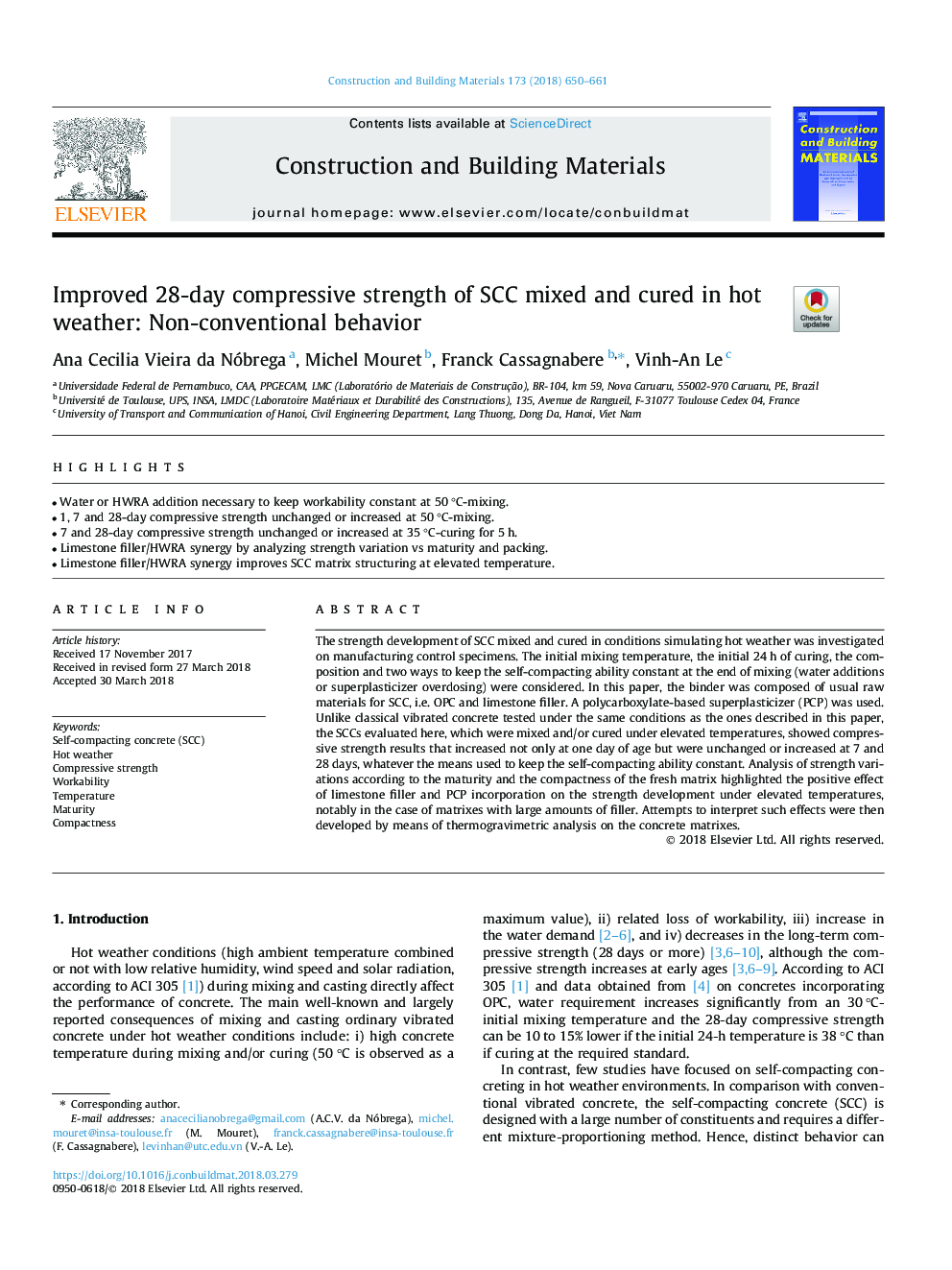| Article ID | Journal | Published Year | Pages | File Type |
|---|---|---|---|---|
| 6713842 | Construction and Building Materials | 2018 | 12 Pages |
Abstract
The strength development of SCC mixed and cured in conditions simulating hot weather was investigated on manufacturing control specimens. The initial mixing temperature, the initial 24â¯h of curing, the composition and two ways to keep the self-compacting ability constant at the end of mixing (water additions or superplasticizer overdosing) were considered. In this paper, the binder was composed of usual raw materials for SCC, i.e. OPC and limestone filler. A polycarboxylate-based superplasticizer (PCP) was used. Unlike classical vibrated concrete tested under the same conditions as the ones described in this paper, the SCCs evaluated here, which were mixed and/or cured under elevated temperatures, showed compressive strength results that increased not only at one day of age but were unchanged or increased at 7 and 28â¯days, whatever the means used to keep the self-compacting ability constant. Analysis of strength variations according to the maturity and the compactness of the fresh matrix highlighted the positive effect of limestone filler and PCP incorporation on the strength development under elevated temperatures, notably in the case of matrixes with large amounts of filler. Attempts to interpret such effects were then developed by means of thermogravimetric analysis on the concrete matrixes.
Keywords
Related Topics
Physical Sciences and Engineering
Engineering
Civil and Structural Engineering
Authors
Ana Cecilia Vieira da Nóbrega, Michel Mouret, Franck Cassagnabere, Vinh-An Le,
